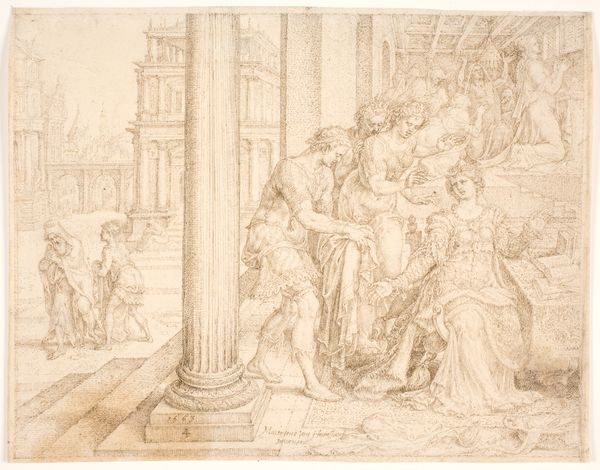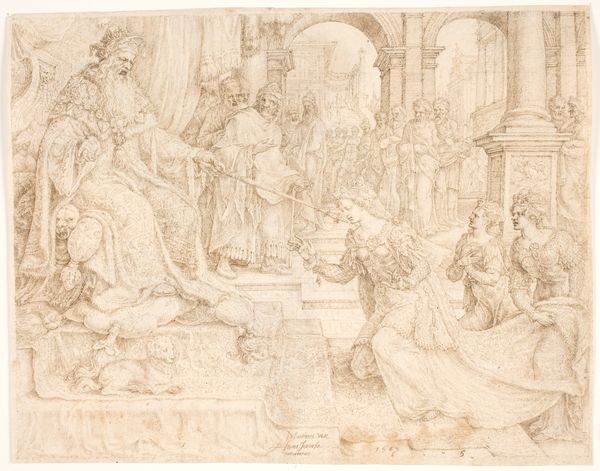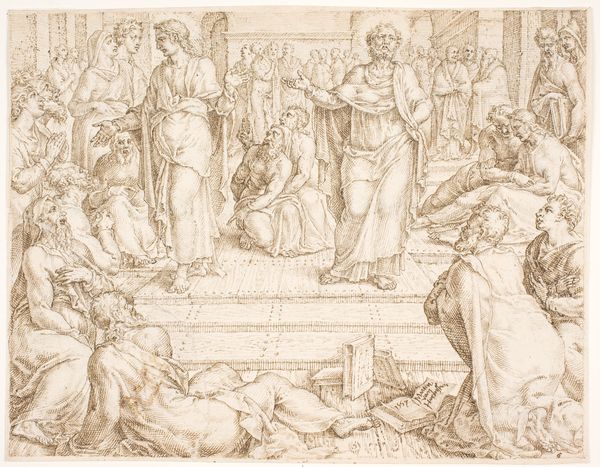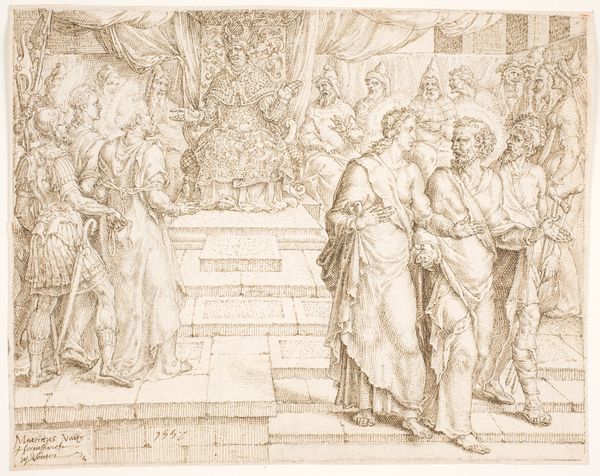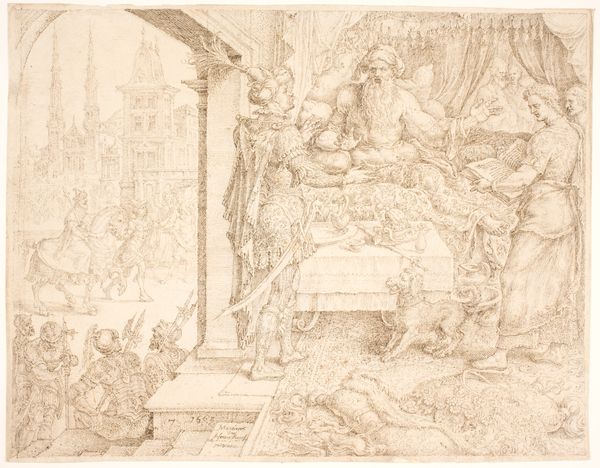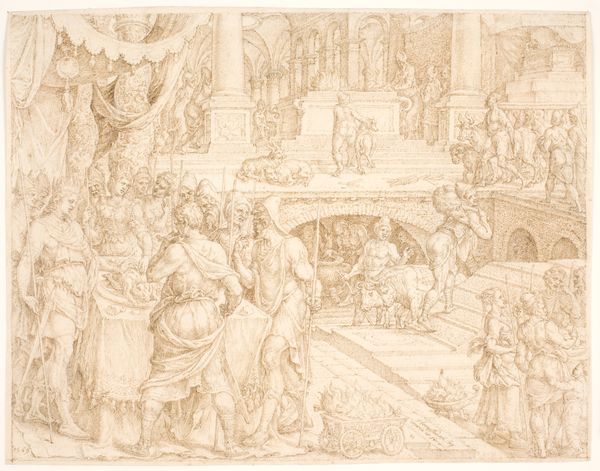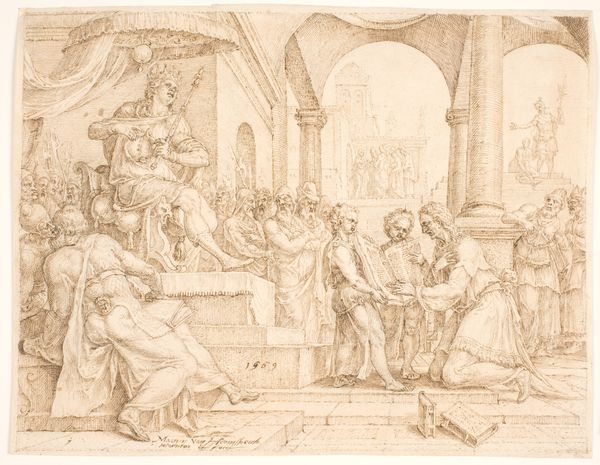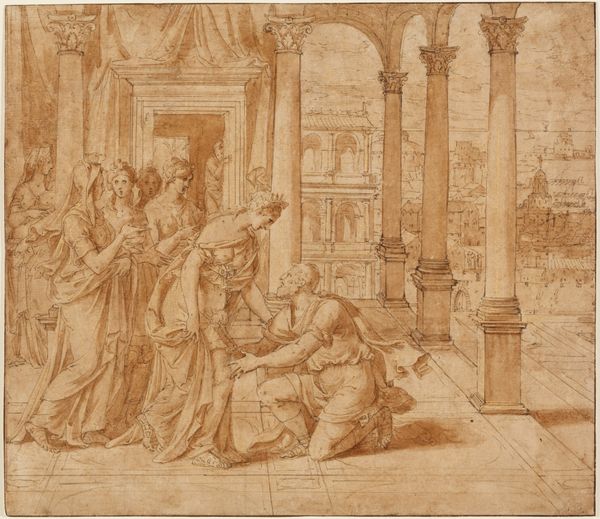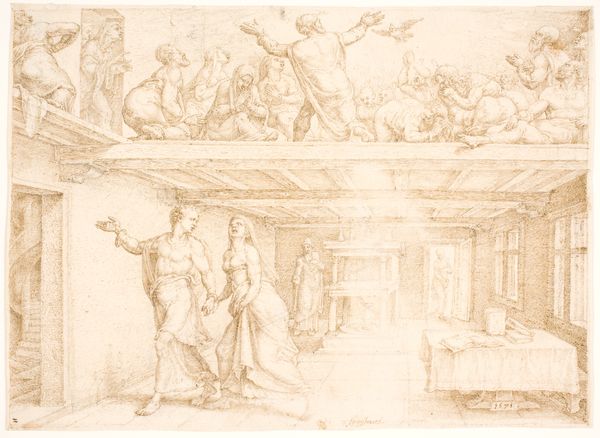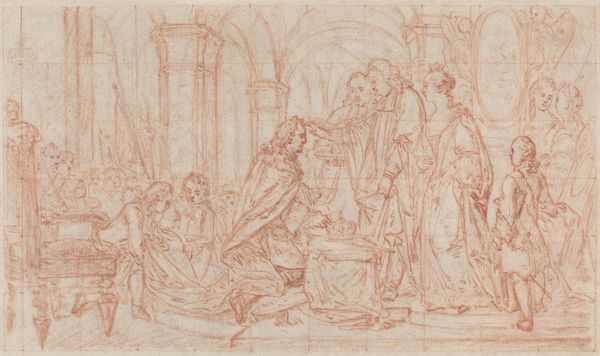
drawing, paper, ink
#
drawing
#
figuration
#
paper
#
11_renaissance
#
ink
#
history-painting
Dimensions: 208 mm (height) x 284 mm (width) (bladmaal)
Curator: This delicately rendered drawing in ink on paper, dating from 1573, is titled "Peter helbreder den lamme Æneas," created by Maarten van Heemskerck. Editor: It’s immediately striking how light the composition is, almost airy, despite the complex interior depicted. The careful layering of lines creates depth but keeps the scene feeling ethereal. Curator: The historical context is significant here. Heemskerck was working during the Renaissance, a period heavily influenced by classical literature. This drawing likely depicts a scene from classical mythology concerning Aeneas’s struggles, which speaks to contemporary narratives surrounding disability and healing through the lens of religious interpretations. The composition points at the dynamics between those with disabilities and their support systems. Editor: Yes, and look at the precision of line! The architectural details, the drapery, and the rendering of the figures – everything is defined with such clear lines. It is rendered almost mathematically in its precision. I wonder about Heemskerck's thought process concerning its semiotic structure. Curator: Heemskerck strategically deploys light and shadow to guide the viewer's eye through a nuanced tableau of power, dependency, and implied agency. Aeneas’s impaired mobility and access is at the foreground in contrast to Peter, potentially symbolizing care or even some interpretation of exploitation or saviorism given our historical knowledge of that period’s perceptions of bodily impairment and medicine. Editor: Observe how Heemskerck uses orthogonals converging toward the rear of the space, creating a very rational, almost scientific perspective that adds dynamism to the scene. I think it has the affect of drawing us into an investigation with Aeneas rather than presenting him to us as a passive object of curiosity. Curator: Indeed, placing it within the context of the rise of humanism provides interesting insight into how these themes were perceived. And that contrasts vividly with our contemporary lens viewing such situations from feminist or postcolonial perspectives. Editor: His choice to work with ink allows for a particularly delicate range of tonality, really capturing the nuances between light and shadow—such expert craft makes engaging with these historical narratives that much more engaging for the contemporary eye. Curator: Considering Heemskerck's choice of this biblical narrative reflects society’s evolving conversations about healing, ethics, and marginality—and this analysis underscores the significance of revisiting art through socio-political lenses. Editor: Agreed. Examining this drawing has affirmed just how much a piece’s impact hinges on its formal structure and material properties as much as the history behind it.
Comments
No comments
Be the first to comment and join the conversation on the ultimate creative platform.

